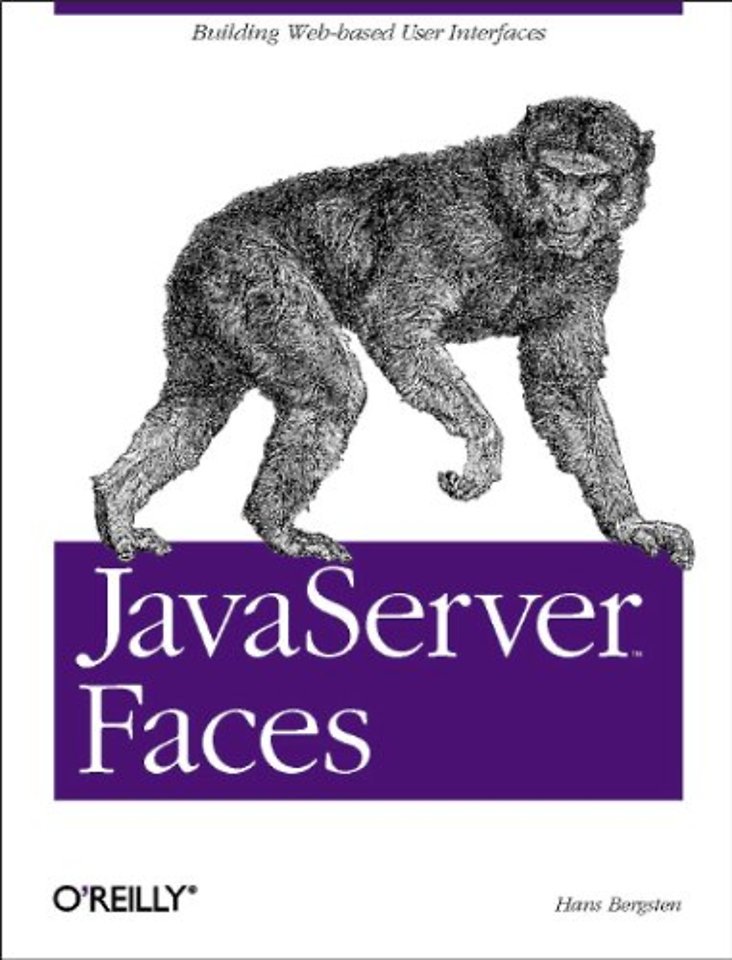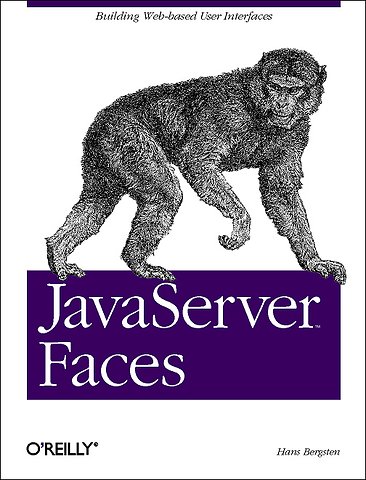


Hans Bergsten is the founder of Gefion Software, a company focused on Java services and products based on J2EE technologies.
Meer over Hans BergstenJavaServer Faces
Building Web-based User Interfaces
Paperback Engels 2004 9780596005399Samenvatting
'JavaServer Faces', or JSF, brings a component-based model to web application development that's similar to the model that's been used in standalone GUI applications for years. The technology builds on the experience gained from Java Servlets, JavaServer Pages, and numerous commercial and open source web application frameworks that simplify the development process.
In 'JavaServer Faces', developers learn how to use this new framework to build real-world web applications. The book contains everything you'll need: how to construct the HTML on the front end; how to create the user interface components that connect the front end to your business objects; how to write a back-end that's JSF-friendly; and how to create the deployment descriptors that tie everything together.
JavaServer Faces pays particular attention to simple tasks that are easily ignored, but crucial to any real application: working with tablular data, for example, or enabling and disabling buttons. And this book doesn't hide from the trickier issues, like creating custom components or creating renderers for different presentation layers. Whether you're experienced with JSF or a just starting out, you'll find everything you need to know about this technology in this book.
Topics covered include:
- The JSF environment
- Creating and rendering components
- Validating input
- Handling user-generated events
- Controlling page navigation
- Working with tabular data
- Internationalization
- Integration between JSF and Struts
- Developing custom renderers and custom components
JavaServer Faces is a complete guide to the crucial new JSF technology. If you develop web applications, JSF belongs in your toolkit, and this book belongs in your library.
Specificaties
Lezersrecensies
Inhoudsopgave
1. Introducing JavaServer Faces
What Is JavaServer Faces?
How Does JSF Compare to Traditional Technologies?
Where Does JSF Fit in the Big Picture?
What You Need to Get Started
2. JSF Development Process Overview
Developing an Application with a JSF-Based User Interface
Developing the Application Backend
Developing Components and Integration Code
Developing the User Interface Pages
3. Setting Up the JSF Environment
Installing the Java Software Development Kit
Installing the Tomcat Server
Testing Tomcat
Installing the Book Examples
Example Web Application Overview
4. Servlet and JavaServer Pages Basics
HTTP
Web Application Deployment and Runtime Environment
Servlets, Filters, and Listeners
JavaServer Pages
Accessing Application Data
5. Developing the Business Logic and Setting Up Authentication
Sample Application Overview
Implementing the Business Logic Classes
Authentication and Authorization
6. Creating and Rendering Components
The Basics
Binding Components to Model Properties
Conditionally Render Components
7. Validating Input
Dealing with Syntax Errors in User Input
Using the Standard Validators
Defining Custom Error Messages
Using a Custom Validator
Other Ways to Validate Input
8. Handling Events
Understanding the JSF Event Model
Handling Application Backend Events
Handling User Interface Events
9. Controlling Navigation
Moving Between JSF Views
Returning a Non-JSF View Response
Returning a JSF View Response to a Non JSF Request
10. Working with Tabular Data
Displaying a Read-Only Table
Processing Row-Specific Events
Dealing with Large Tables
Editing Tabular Data
11. Internationalization
Localizing Application Output
Handling Localized Application Input
Dealing with Non-Western Languages
12. Odds and Ends
Building a View from Many JSP Files
Combining JSF Views with Other Content
Dealing with Struts Applications and JSF
Programmatically Modifying Components
Using a PhaseListener
Debugging and Error Handling Ideas
13. Developing Custom Renderers and Other Pluggable Classes
Developing Custom Renderers
Using Other Custom Classes
Packaging Custom Classes
14. Developing Custom Components
Extending an Existing Component
Developing a New Component from Scratch
15. Developing a Custom Presentation Layer
The ViewHandler Class
Using Java Classes as Views
Using Pure HTML Templates with XML View Definition Files
A: Standard JSF Tag Libraries
B: JSF Expression Language Reference
C: Standard JSF Components and Render Kits
D: Infrastructure API Reference
E: JSF Configuration File Reference
F: Web Application Structure and Deployment Descriptor Reference
Index
Anderen die dit boek kochten, kochten ook
Rubrieken
- advisering
- algemeen management
- coaching en trainen
- communicatie en media
- economie
- financieel management
- inkoop en logistiek
- internet en social media
- it-management / ict
- juridisch
- leiderschap
- marketing
- mens en maatschappij
- non-profit
- ondernemen
- organisatiekunde
- personal finance
- personeelsmanagement
- persoonlijke effectiviteit
- projectmanagement
- psychologie
- reclame en verkoop
- strategisch management
- verandermanagement
- werk en loopbaan





